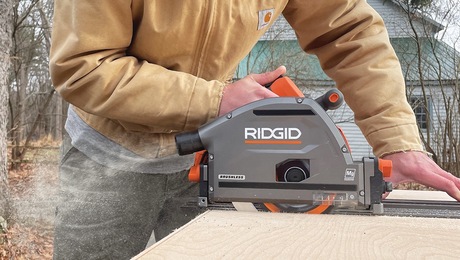After years of saving, we just completed a two-story addition with a large family room on the first floor and two bedrooms on the second. Unfortunately, something –I think it is the deep Lightolier recessed lighting cans in the ceiling of the family room — is transmitting sound so clearly from the first floor to the bedrooms above that someone in the bedroom can hear a conversation taking place at normal volume in the family room below. I have lived in cheap apartments with better sound insulation between floors than in my new addition.
The second floor rests on 14 in. deep, 20 ft. long laminate I-beams. The subfloor of the second floor is composed of 3/4 in. plywood topped by 3/4 in. pre-finished maple, which should deaden some sound transmission. There is R30 insulation between the two floors except where the cans (there are 16)are located. There are no HVAC ducts in the ceiling of the first floor or connecting the two floors. I can hear the sound most clearly when I place my ear to places in the second story floor that are directly above the location of the cans in the first floor ceiling.
The architect says that he has never heard of such a problem before, but he can sure hear it now. The builder said the sound transmission problem would disappear when we put in rugs and furniture, but it hasn’t. My questions are:
1. What is causing this problem?
2. Can I fix it? The architect suggests replacing the cans with insulated ones and possibly putting blown-in or rigid insulation above the cans. There are two drawbacks: (1) it would be quite expensive and would require extensive drywall repair (cutting and patching squares around 16 cans and (2) it might not work. In addition, the insulated cans must use lower wattage bulbs.
Does anyone have any experience with this type of problem? Does anyone have suggestions on how to fix it? I am hoping for relatively inexpensive solutions but am open to anything that is reasonable certain to work.
Thanks


















Replies
Quite a mystery! Part of my house at this point _only_ has a subfloor (3/4" underlayment) and my wife can't hear me calling for her from below (or so she claims). You've got at least 3/4" of maple more than I do, so one would expect lower sound transmission.
Let's assume it's not a weird acoustic reflection coming up the stairs like you'd get at the Capitol building, but closing a bedroom door would rule that out.
Here's a crazy question:
What kind of trim is on the cans below? Here's my line of thinking: Since your sound is louder than mine, despite more material, you must be getting amplification of the sound. If the can has a trim piece with a small hole, the can might be acting like a megaphone (the cone type, not a bullhorn), with the small circle at the bottom trim and the big circle at the top of the can.
I know, it's a crazy theory, but assuming your trim pieces pop off easily it should be an easy enough experiment to test. After you exhaust more sane suggestions posted here, of course. :)
Thanks for your comments. Unfortuately, the megaphone theory doesn't work. The cans are much bigger at the bottom than at the top. Still, I think they are collecting the sound and then focusing it into a small hole that is amplifying it and delivering to the ceiling of the floor above.
I am at a loss to know what to do. Maybe I can squirt in some foam insulation somehow.
Let me know if you have other ideas.
How about temporarily taping some cardboard or foam rubber or scrap carpet or something over each light fixture, to see if the sound transmission changes?
The lights should be turned off during this experiment, of course.
Stuart and Sungod have the same basic suggestion and it's a good one. I wish I had though of it. I had tried covering the floor directly above the cans with pieces of carpet, but this idea is much better.
This weekend I will stuff some R-30 insulation in the cans and then cap the cans with drywall. I will let you know what I learn.
Thanks.
Add particle board to you existing second floor sheathing, 1/2" to 3/4" will do. But before lifting the carpet and padding, just lay a piece on top of the rug to hear the difference.
Thanks for the suggestion, but I have hardwood floors so it's too late to add particle board. I am thinking of removing the cans and putting in insulated ones, but that is really expensive at this point and might not work.
Another alternative is to remove the cans, plug up the holes, and add track lighting instead.
Let me know if you have any other ideas.
Lets test you can light transmission theory. Take out the light bulbs, cut some round circles out of drywall and stuff it in (drywall is cheap, easy to cut, and put some screws in it to be able to pull it out. See if you hear a difference
If they are the culpret, see if the can touches the floor above, some are adjustible and should not touch the sheathing above.
Stuart and Sungod have the same basic suggestion and it's a good one. I wish I had thought of it. I had tried covering the floor directly above the cans with pieces of carpet, but this idea is much better.
This weekend I will stuff some R-30 insulation in the cans and then cap the cans with drywall. I will let you know what I learn.
Also, the cans don't touch the flooring above, but they aren't insulated and can't take insulation above or near them. If I replaced them with insulated cans, it might make a difference.
Thanks